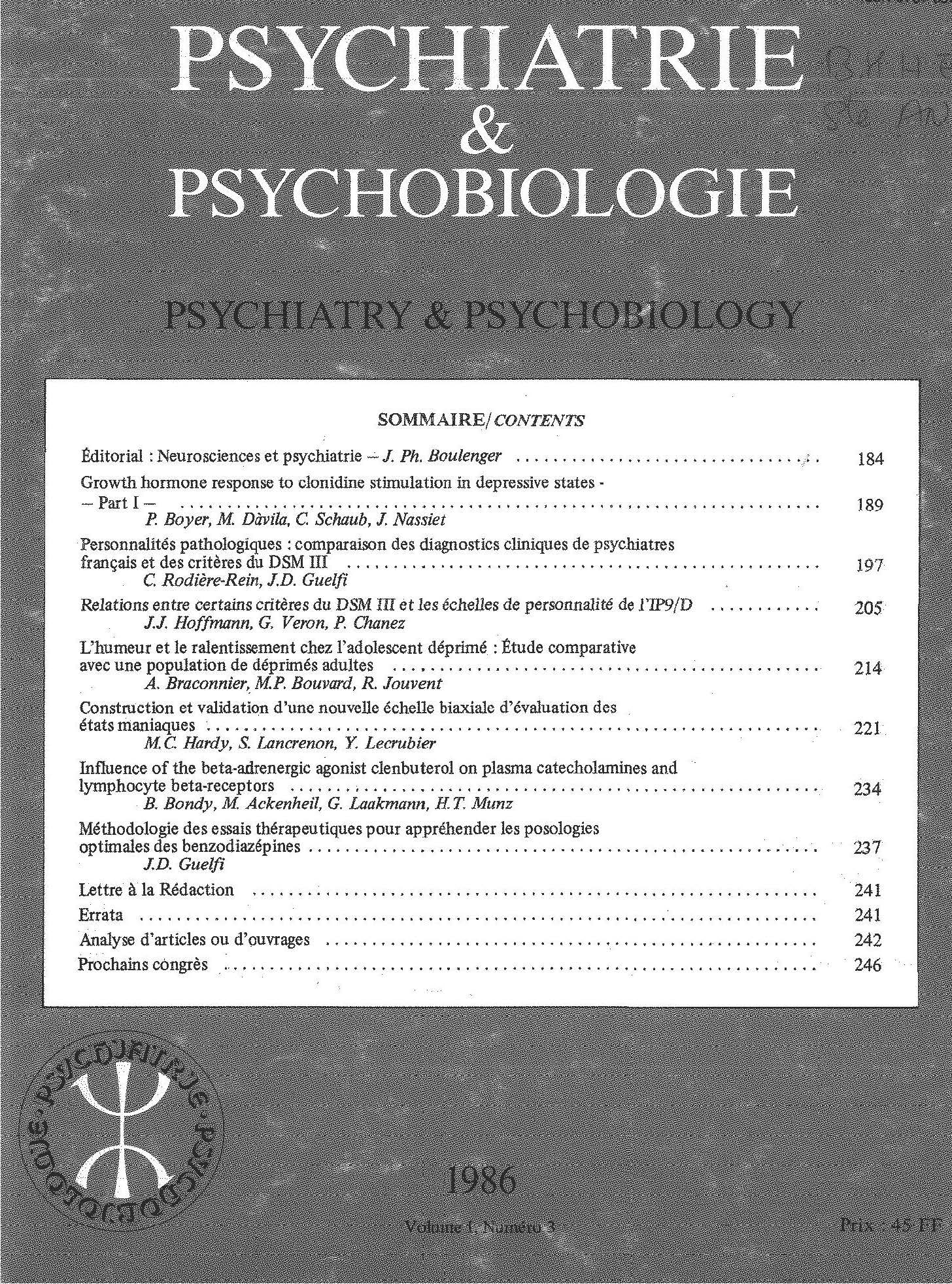No CrossRef data available.
Article contents
Fenetyline as possible treatment in non-responder depressive patients
Published online by Cambridge University Press: 28 April 2020
Summary
The authors report the case of a 45-yr-old male who presented from 1979 to 1986 with several severe depressive episodes. The patient fulfilled Feighner criteria for major depression, Newcastle criteria for endogenous depression: the depressive episodes were all classified as severe recurrent depression without melancholia according to DSM III. The patient was resistant to different types of treatment (ECT, tricyclic and MAOI drugs, lithium, sleep deprivation). With a treatment of 10 cg/day of fenetyline, reduced to 5 cg/day after 6 months, (atypical manic episode), the patient improved considerably for 20 rnonths. The therapeutic response decreased after this period but after a month of withdrawal, the patient again responded. The authors cannot explain the duration of this therapeutic response.
Résumé
Les auteurs rapportent le cas d'un homme de 45 ans ayant présenté de 1979 à 1986 plusieurs épisodes de dépression majeure selon les critères de Feighner, à caractère endogène selon les critères de Newcastle, correspondant à la dépression majeure récurrente sans caractère mélancolique du DSM III. Après avoir constaté l'inefficacité des thérapeutiques habituelles (électrochocs, tricycliques, IMAO, lithium, privation de sommeil), la prescription de fénétylline à la dose de 10 puis de 5 cg, du fait de manifestation d'excitation, a entraîné une amélioration considérable pendant 20 mois au total, qui s'est ensuite épuisée. La reprise du traitement après une interruption de l mois a de nouveau entraîné une amélioration identique à la précédente. Les auteurs ne peuvent expliquer la durée de cet effet.
- Type
- Original article
- Information
- Copyright
- Copyright © European Psychiatric Association 1990



Comments
No Comments have been published for this article.